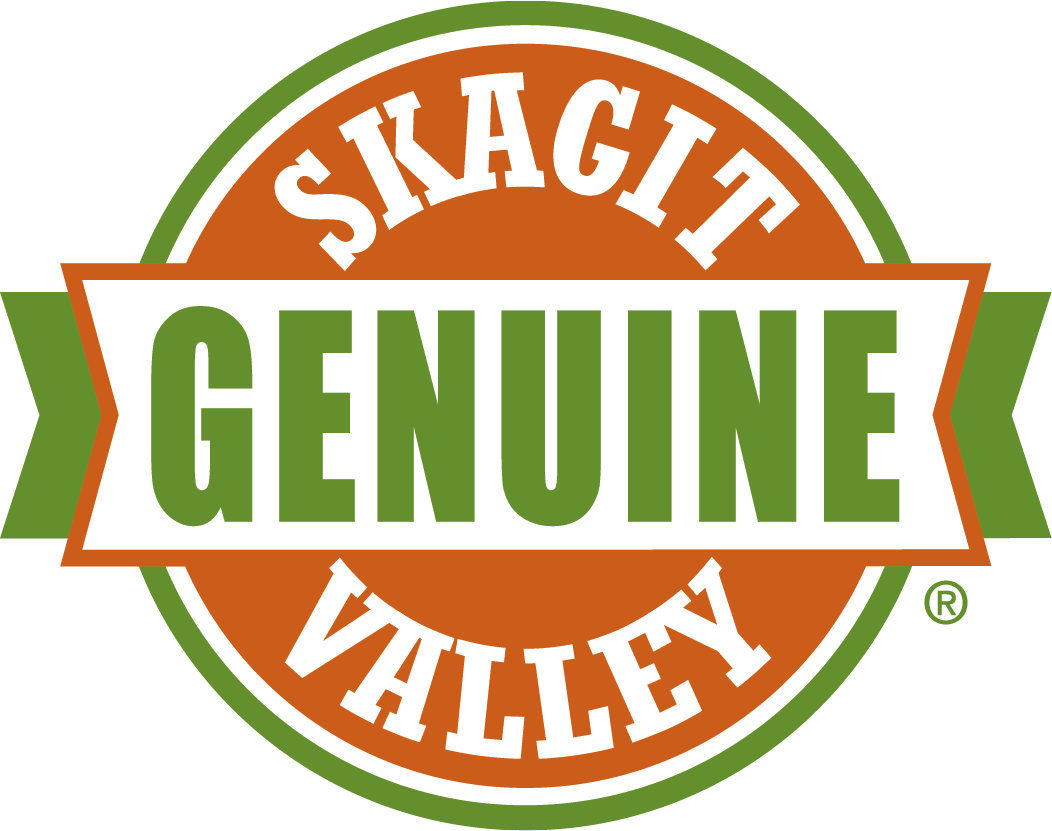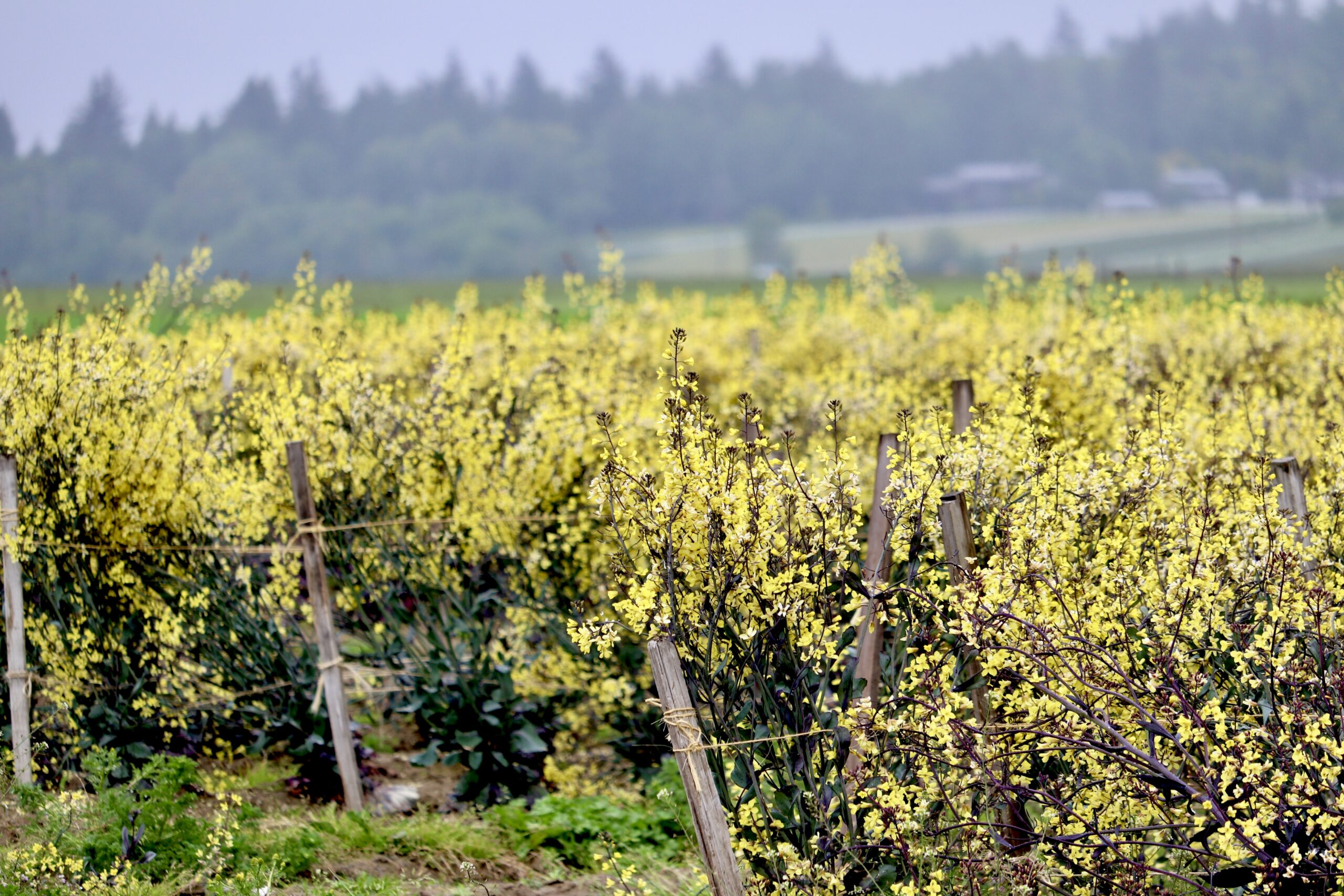Growing Seeds and the history of Pinning Day in the Skagit Valley
Spring is the season of new beginnings. Lambs, calves, and kids, frolic in pastures. Trees full of blossoms promise fruit later in the season. And growers collect and plant billions of tiny seeds to feed the world. But it’s not as simple as just planting seeds. Before the planting begins, seed growers meet to determine who will grow which seeds where. In our corner of the world, this takes place at an annual ceremony known as Pinning Day in Skagit Valley.
The tradition involves seed business representatives meeting in an unassuming room at WSU’s Northwestern Washington Research and Extension Center. Each grower enters their numbers in a proverbial hat. A third-party draws the numbers of seed growers and business owners and their respective crops. Then the drawn seed growers’ put a pin on the map, designating where they’ll grow seed. This helps keep the process fair and civil. And maybe even a little fun.
Skagit Valley Seed Industry
Seed growing is a specialized skill, and knowing where to plant what seeds is a huge part of it. Because of environmental factors, of course. But also because cross-pollination with other varieties is devastating when you’re trying to carry on a genetic line.
And Skagit Valley seeds are big money, so a lot rides on good vegetable genetics. The Skagit Valley is a world-class spinach, cabbage, and brassica seed producer .
“Skagit and Snohomish counties produce nearly 75% of the US supply of spinach and cabbage seed and nearly 95% of the U.S. table beet seed,” WSU’s 2020 Skagit County Agriculture Statistics reads. “Skagit County is known as a significant world contributor with approximately 8% of the world’s spinach seed, 25% of the world’s cabbage seed, and 25% of the world’s beet seed.”

Pinning Day in Skagit Valley Through the Years
So how did Pinning Day in Skagit Valley come about? WSU’s 2020 Skagit County Agriculture Statistics explains.
“Vegetable Seed Pinning has gone back to the 1940’s before that rumor has it there were a good deal of fist fights,” Don McMoran, Director of WSU’s Skagit County Extension told Genuine Skagit Valley in an email. “There are lots of documents that were created throughout the years and perfected by my predecessor Devon Havens and Dr. Lindsey du Toit.”
But why was vegetable seed pinning necessary in Skagit? It’s an issue of keeping fields separate from each other to reduce potential contamination from cross-pollination, and even disease.
“The need for isolation distances to prevent contamination from cross-pollination keeps the vegetable seed acreage below 5,000 acres in Skagit County. Skagit-based seed companies contract some of their acreage with Snohomish, Island, Whatcom, and Clallam County growers,” WSU’s 2020 Skagit County Agriculture Statistics reports. “To protect these areas, seed companies joined together in the 1940s to designate where the crops would be grown. On the first Monday in March [..], the seed companies meet at WSU NWREC for the annual pinning days that determine which crop/variety will be planted and where.”
So, growers and stakeholders created Pinning Day to prevent turf wars among seed growers, and keep seed crops healthy.
Turning Tradition into Code
But despite everyone’s best efforts, Brassica oilseed growers and Brassica vegetable seed growers still ran into conflicts. This led to uneasy feelings about the potential for cross-pollination. So, farmers and other stakeholders to jump into action.
“In 2008, in response to these concerns, Brassica vegetable seed growers, canola seed growers, commercial oilseed growers, and university and government officials cooperated to create three regulated Brassica Seed Production Districts.” WSU’s 2013 Production of Brassica Seed Crops in Washington State: A Case Study on the Complexities of Coexistence describes.
The code adopted was WAC 16-326 BRASSICA SEED PRODUCTION DISTRICT.
“Brassica seed crops, including seed grown for planting and seed grown for crushing or extraction for fuel or oil, may only be grown in locations that have been identified in a timely manner through the pinning process,” the WAC reads. “Pinning for Brassica seed production in Brassica seed production district 1 will be held at least once a year at the WSU Northwestern Washington Research and Extension Center[.]” All of mainland Skagit is included in district 1, as well as parts of Whatcom, Snohomish, Island, and Clallam Counties.
Carrying on a Tradition of Collaboration
Pinning Day is about growers coming together to make sure their own and their fellow growers’ harvests are bountiful. And that’s a beautiful thing.
Perhaps WSU’s 2020 Skagit County Agricultural Statistics states it best. ‘It is this spirit of cooperation that keeps the seed industry growing in Skagit County.’
2022’s Pinning Day just took place, and Don McMoran reported on the occasion
“Pinning day 2022 was amazing, we actually got to meet in person at WSU NWREC,” McMoran wrote. “In the pandemic the process moved online but it was still great to see everyone, even if we did have to wear a mask.”
And of course, the hard question: what did Don use to draw numbers out of this year?
“Usually I use a toy combine to draw numbers but it was locked in the office so I used a coffee cup.” McMoran concluded.
Now the hard work of planting begins. And next time you drive by a field of vegetables going to seed in Skagit, you’ll know the story behind it.

